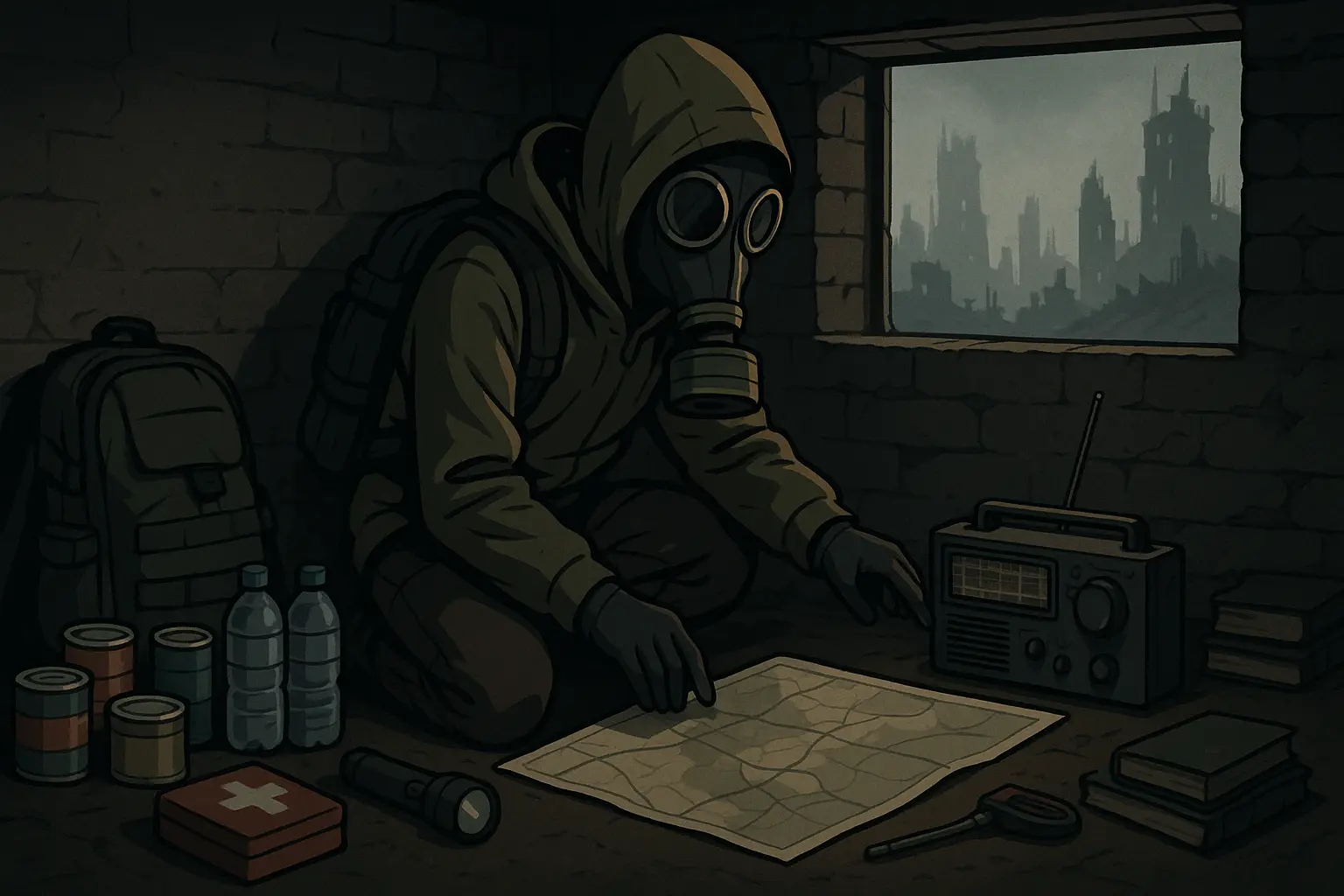How to Survive World War 3: Realistic Preparedness Guide

With global tensions rising and the media often buzzing with fears of World War 3, many people are asking themselves:
What can I actually do to survive if the unthinkable happens?
This is your step-by-step, practical guide to preparing for and surviving a large-scale conflict or nuclear event—without the hype, paranoia, or fake “doomsday” advice. Focused on real UK/Europe conditions but useful worldwide.
Understanding the Risks
- Nuclear war is NOT the only threat: Cyber attacks, conventional warfare, supply chain collapse, mass blackouts, civil unrest.
- Most people will survive the initial blast: The real challenge is surviving the weeks and months after.
- Preparation is not panic—it's common sense.
Step 1: Home Preparedness (Before the Crisis)
1. Stock Essential Supplies
| Item | Amount (per person, min.) | Notes |
|---|---|---|
| Drinking water | 14 litres (2 weeks) | 2L/day, more if possible |
| Food | 2,000 kcal/day (2+ weeks) | Tinned, dry, easy prep |
| First aid | 1 kit + meds | Include iodine, plasters |
| Power/lighting | 2 torches, batteries, candles | Plus power bank/solar |
| Sanitation | Wet wipes, bin bags, soap | Hygiene is critical |
| Radio | Wind-up or battery AM/FM | For official updates |
| Warmth | Blankets, sleeping bags, hats | No heating = cold! |
2. Home Security & Shelter
- Identify the safest room (preferably windowless, central, below ground if possible).
- Block light leaks at night (curtains, blankets).
- Reinforce doors/windows if civil unrest likely.
- Have basic tools ready: crowbar, hammer, duct tape.
Step 2: What To Do If WW3 Starts
1. Stay Calm and Informed
- Listen to official radio broadcasts for shelter-in-place or evacuation orders.
- Avoid rumors and fake news on social media.
2. Nuclear Threat? Go Inside Immediately
- Get inside, stay inside, stay tuned.
- Move to the innermost, lowest part of your home.
- Seal windows, doors, vents as best as possible (plastic sheets, tape).
- Wait at least 48-72 hours before emerging, unless authorities say it’s safe.
3. Chemical/Biological Threat?
- Use a mask (N95 or better), goggles, gloves.
- Seal gaps with wet towels, tape, plastic if possible.
- Remove contaminated outer clothes.
Step 3: Surviving the Aftermath
1. Water & Food
- Ration carefully.
- Drink bottled/stored water only until official “all clear.”
- Never eat open food left exposed after a blast.
2. Decontamination
- If you suspect fallout:
- Remove clothing and seal in a bag.
- Wash skin and hair thoroughly with soap and water.
3. Mental Health
- Keep a daily routine.
- Stay busy: chores, reading, games.
- Talk to family/friends—don’t isolate.
Step 4: Longer-Term Survival
| Task | Why It’s Important | Example |
|---|---|---|
| Join local community | More skills/resources | Neighborhood group |
| Barter/trade | Money may become useless | Food for batteries |
| Urban foraging | Supplements food stores | Edible weeds, parks |
| Recharging devices | For light, comms | Hand-crank, solar |
Essential WW3 Survival Kit Checklist
| Item | Packed? |
|---|---|
| Water & filter | |
| Long-life food | |
| First aid/meds | |
| Wind-up radio | |
| Power bank/charger | |
| Torches/candles | |
| Batteries | |
| Plastic/tape (for sealing) | |
| Blankets/sleeping bag | |
| Bin bags/toilet paper | |
| Multi-tool | |
| Emergency contacts | |
| Copies of documents |
FAQ: Surviving WW3
Should I build a fallout shelter?
For most people, improvised “safe rooms” at home offer reasonable protection. Professional bunkers are rare and expensive.
What about iodine tablets?
They protect the thyroid from radioactive iodine—use ONLY if directed by health authorities after a nuclear event.
Is it worth running?
If you are not in the immediate blast/fallout zone, shelter is safer than fleeing.
How long should I shelter?
Radiation drops rapidly—72 hours is minimum, 2 weeks is much safer.
Conclusion
The world may never face WW3, but real preparedness means you’re ready for anything—blackouts, civil unrest, storms, or even a global conflict.
Stay informed, plan ahead, and you’ll dramatically increase your chances of survival and recovery.
Preparedness is not paranoia. It’s peace of mind.
For more practical survival and prepping guides, explore the rest of the blog!